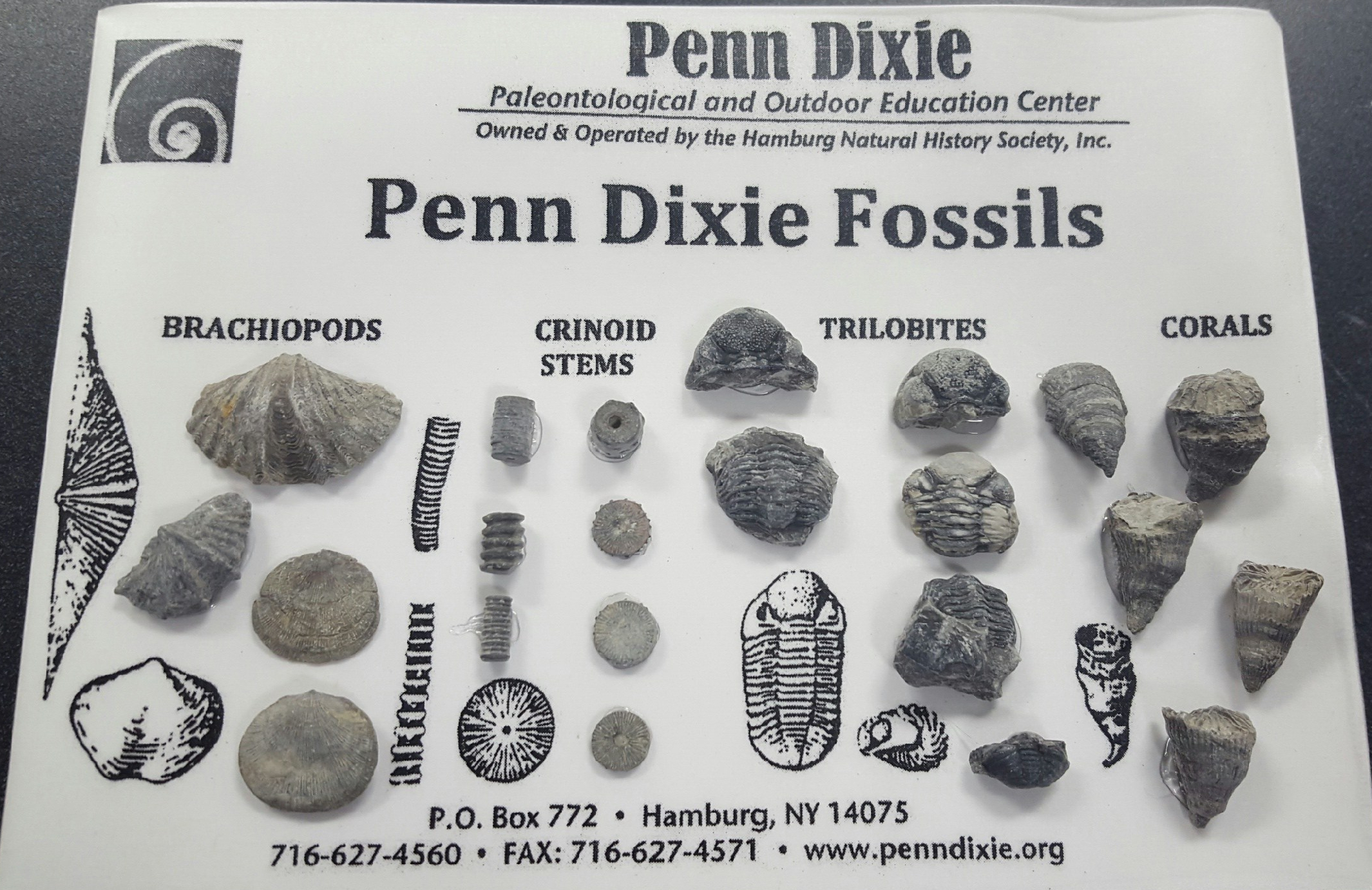DEVONIAN FOSSILS OF WESTERN NEW YORK
PENN DIXIE FOSSIL HUNT ... Penn Dixie Fossil Park
Open daily Jun 11 to Labor Day from 10 to 5. ... Adults $10
EARTHCACHE REQUIREMENTS
Each cacher must send his/her own answers BEFORE logging a find. Enjoy the journey (learning adventure) as well as the destination (smiley earned). Remember to take only pictures and leave only footprints. To get credit for this Earthcache, complete the following tasks:
1. MESSAGE …. DIG ... a. Describe the matrix (rock). b. What tools (if any) did you use?
2. MESSAGE …. FOSSILS ... a. How much time did you spend searching for fossils? ... b. How many did you find?
3. MESSAGE …. IDENTIFICATION ... What fossils did you find? Use the picture to help you identify your finds.
4. LOG …. Post a picture of your finds. This picture is your log signature.
OPTIONAL - Please respect the time and effort involved in creating this earthcache by adding A and B to your log.
A. JOURNEY OF THE MIND ... Science explains what we observe. Relate (in your own words) something you found interesting in the reading. This adds to your learning adventure and your log.
B. JOURNEY OF THE HEART ... Art shares our personal experience of what we see. Share something special you found on site, and why it is special to you. This is a memorable addition to your log and will make other hearts smile.
Journeys of Heart and Mind ...
Stories to Touch the Heart and Puzzles to Challenge the Mind / Rainbow Tree Story
Penn Dixie is ranked as the #1 fossil park in the U.S. At the site of a former cement quarry in Hamburg, NY, you can dig, collect and keep Devonian Period fossils.
THANK YOU Phil Stokes (Executive Director Hamburg Natural History Society/Penn Dixie) for permission to share this learning adventure.

PENN DIXIE FOSSILS
INVERTEBRATES ... Bivalves – clams / Brachiopods – symmetrically shelled filter feeders / Bryozoans – moss animals / Cephalopods – predatory marine molluscs / Corals – colonial and solitary filter feeders / Crinoids – sea lilies / Crustaceans – arthropods such as lobsters and crabs / Gastropods – snails / Ostrocods – tiny crustaceans / Other echinoderms – related to sea stars / Trilobites – extinct marine arthropods
VERTEBRATES ... Conodonts – extinct eel-like vertebrates / Fish – primitive Paleozoic fish
PLANTS ... Petrified wood – extinct plants from the Devonian
MATRIX
The rock the fossils are embedded in is called the matrix. This can vary from soft to hard.
SOFT - you can use your fingers and a brush to extract the fossils.
HARD - use of a tool is needed to extract the fossils.
DEVONIAN PERIOD
During the Middle Devonian, a mountain building phase began when Avalon (ancient) collided into eastern North America (modern). This collision created the Acadian Mountain range. Rivers filled with sediments flowed into the Catskill Basin at the base of the mountains. The basin was flooded by the Kaskaskia Sea, which covered New York west of the Hudson river, as well as many other states down to the gulf of Mexico.
These sediments accumulated and formed the rock layers seen today in western New York. The most fossiliferous shale and mudstone is the Wanakah shale of the Ludlowville formation -and- the Windom Shale of the Moscow formation. Due to the warmer climate (New York was near the equator), the shallow sea was home to a flourishing fauna of trilobites, brachiopods, pelecypods, crinoids, cephalopods, and gastropods.
The Devonian period is also known as the "Age of Fishes." The fish of this time period were mainly cartilagenous so they rarely fossilized. However, the harder dermal armor, scales, and teeth did fossilize. These preserved parts are the major links to understanding fish of that time period and tracing the ancestry of most modern fish to this period.
ROCK-WATER RELATIONSHIP
The most common method of fossilization is called permineralization, or petrification. After an organism's soft tissues decay in sediment, the hard parts are left behind. Water seeps into the remains, and minerals dissolved in the water seep into the spaces within the remains, where they form crystals. These crystallized minerals cause the remains to harden along with the encasing sedimentary rock.
In another fossilization process, called replacement, the minerals in groundwater replace the minerals that make up the bodily remains after the water completely dissolves the original hard parts of the organism.
RESOURCES
Penn Dixie Fossil Park https://penndixie.org/
Fossil Guy http://www.fossilguy.com/sites/18mile/index.htm
Preparation https://english.fossiel.net/information/article.php?id=82&/Preparation